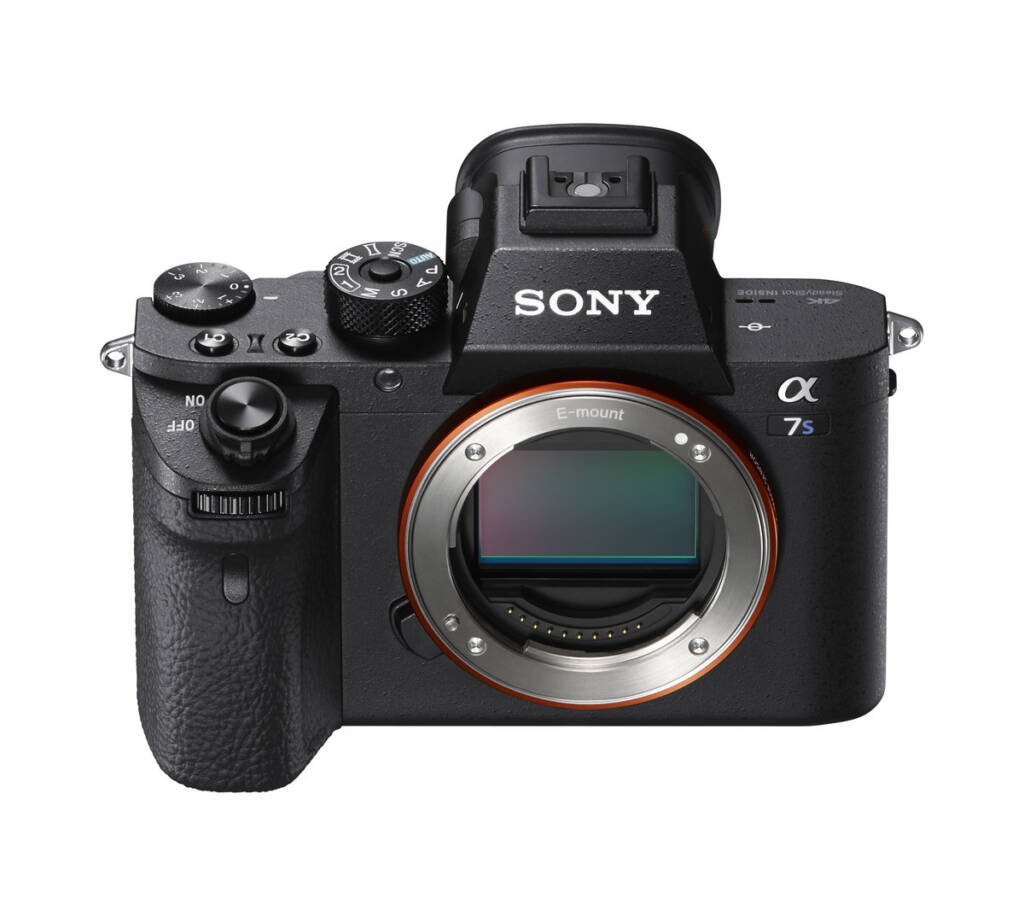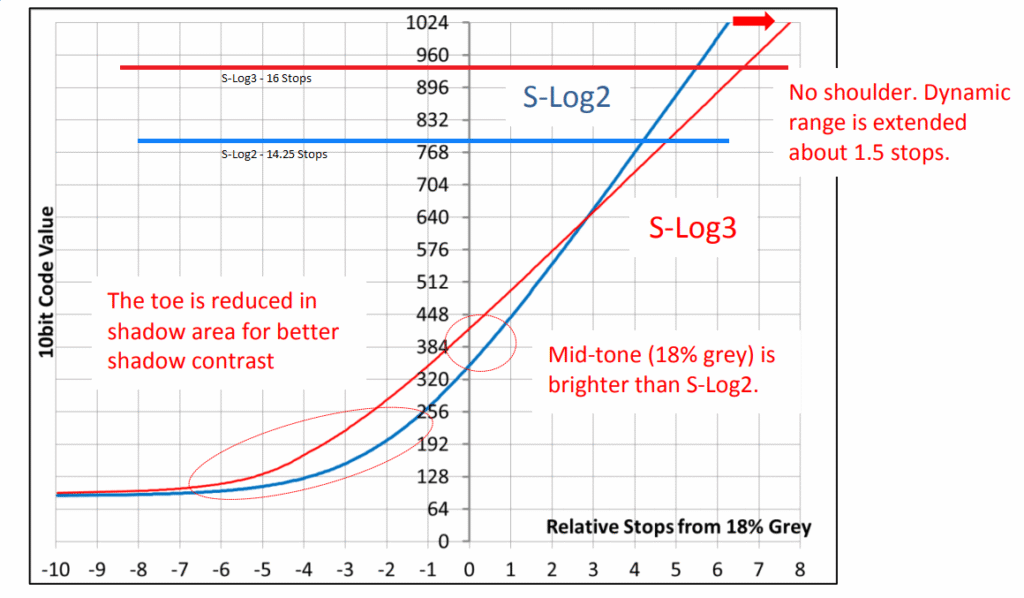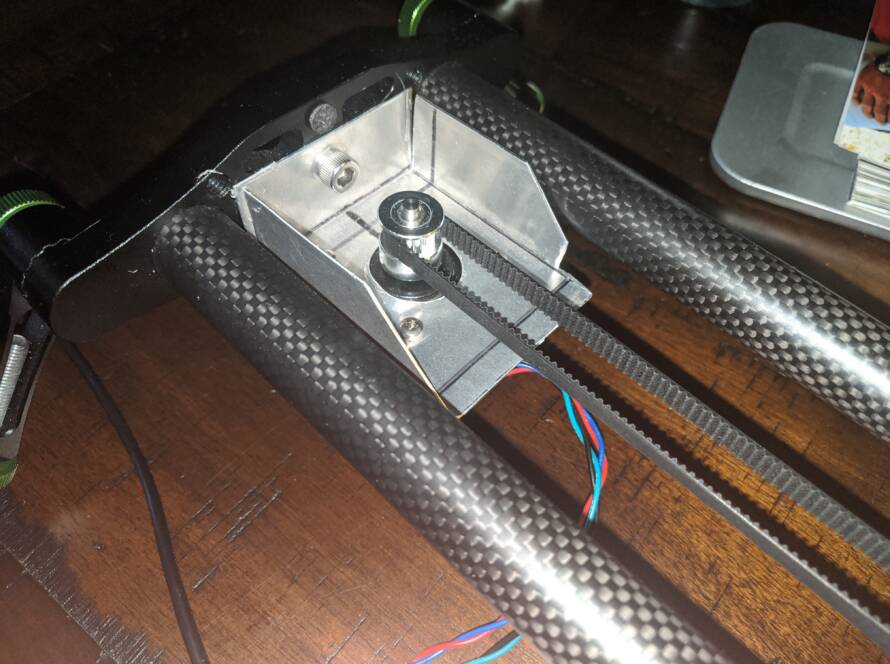
Every so often i’ll come across a video or blog post talking about, or asking for the best camera settings for your Sony Mirrorless Camera. Most of these articles end up revealing early on that they’re based on subjective opinion rather than the science behind color spaces, picture profiles, gammas, etc. I want to change that and talk about the science behind my choices and why I use the picture profile settings.
Just because they're the best doesn't mean they're the best for you.
Before I get to far into this post I want to preface this by saying even though the science may back up my claims, it doesn’t mean these settings will be the best for you and your needs. In many ways, these settings could be the absolute worst for your needs. Furthermore, you may have your own reasons to not use these settings. If you aren’t sure, then I would recommend giving these settings a try and if they work for your needs, then awesome, otherwise use whatever you feel works best for you.
So, What are the best video settings for your Sony Mirrorless Camera?
I’ll get right to it, go to the picture profiles selection page and switch to your S-Log2 picture profile(PP7 by default). If it isn’t the default profile settings, reset it by clicking up once and then the middle button on the D-Pad, to select the option. After your S-LOG2 profile has been reset, scroll down to the Color Mode and set the Gamma to S-Gamut3.Cine or S-Gamut3 if you want a larger color space. That’s it.
At this point, the primary settings are in place and you are free to modify the Saturation, Color Phase, Color Depth and Detail with no loss of detail or negative effects, so modify at your discretion.
Now, don’t just take my word for it, let me explain the science behind my reasoning for this profile.
S-LOG2 vs S-LOG3
The quick answer to this question is compression, compression, compression. I’m sure that won’t be good enough, so i’ll go into just a bit more detail.
S-LOG3 is technically the newer standard released by Sony, but unfortunately it’s a Log Curve that’s largely misunderstood, especially in the YouTube scene. So many creators talk about why they use S-Log3 and how it’s the best, except it’s not. S-Log3 is based off of something called the Cineon Log Gamma Curve. This Log curve is based off of technology that was developed in the 80’s for digitizing film. This Gamma Curve isn’t necessarily bad, but it’s not ideal for an 8 Bit camera with a limited bitrate and dynamic range. See, this Gamma Curve was developed to capture upwards of 16 Stops of dynamic range. Pair that with an 8Bit 4:2:2 codec and there is going to be a lot of compression. Furthermore, there is going to be a lot of wasted data on either end of the digital codec, but i’ll get into that a bit later.

What about S-Log2?
S-LOG2 is based around and was developed with the sole intent of having the ability to get the most out of new digital sensors. What I mean by this is that the current sensors in Sony cameras, under ideal conditions, are capable of capturing around 14 stops of dynamic range. That means to get the most out of the sensor and Codec, you want to have a Gamma Curve that matches that of what the camera sensor is capable of shooting. With its ability to capture between 14-14.5 stops of dynamic range, this is where S-Log2 comes in. Let’s go back to S-Log3 for a second; Remember how I mentioned S-Log3 has the ability to handle up to 16 Stops of Dynamic range? Well, if you only physically able to capture 14 stops of DR(Dynamic Range), yet the digital codec/Gamma Curve is capable of 16 Stops, then there will be “wasted space” in either the Shadows or Highlights because of the inability to actually capture that data. Now, on the flip side, if you pair S-Log2 up to a sensor that is capable of capturing the proper amount of data(14-15 Stops), then there will be no wasted space or loss of data, etc., at least that’s assuming you are properly exposed.
What does this really mean?
Sony cameras, except pro cameras, record in a compressed 8bit 4:2:0 codec that is highly compressed. Even with an external recorder, the cameras still only provide 8 bit, albiet 4:2:2, worth of information. When the time comes in Post production and you need to handle color grading, you are going to start manipulating the video footage, including stretching the shadows, highlights and midtones to your heart’s desire. What this means is you want to have as much data as possible, so being able to capture the most information from the cameras sensor as possible will be crucial. Using S-Log2 will allow exactly this. If there are any questions about the validity of this, here’s an illustration provided directly from Sony. I’m a visual guy, so this helps me understand.(https://pro.sony/s3/cms-static-content/uploadfile/06/1237494271406.pdf)

Look at the red line first, this is S-Log3. Notice the line starts to rise as low as -9, possibly even -9.5. This is the lowest point that data is being recorded, but for the sake of this example, we see a discernible increase around -8.5. Next, look at where the line ends, 7.5. Add these together and you get the dynamic range that S-Log3 is capable of recording, 16(Around there). Now, do the same with S-Log2, -8 up to 6.25, which results in a Dynamic range of 14.25. When we’re dealing with a limited amount of data that’s even able to be recorded, we want to make sure we’re getting the most out of it; thus, S-Log2 over S-Log3 every day of the week.
Moving along…
Let’s talk Color Space.
First, what is this thing called Color Space(or Color Gamut)? To use Sony’s words directly, “The colour gamut is the range of recordable colour, and put simply, the wider it is, the more colour information is recorded.” When choosing what color Space/Gamut(We’ll just user Color Space for ease of use) to use, you need to ask yourself how will your content be consumed? In today’s day-in-age the de facto standard can pretty much be brought to REC-709, or more specifically, “ITU-R BT.709”, but you may see it as ITU709 in the camera. This color space is pretty standard across most computer monitors, TV’s, etc and is the standard High Definition Color stace. In other words, if you have a screen, it can probably display all color data of an image that’s been encoded with a REC-709 color space.
But, let’s say you want your content to have more colors, more vibrant colors; to display your content on a 4k HDR screen with the ability to display more colors that are considered “True to life”. Then you want a larger color gamut such as DCI-P3, which is fully supported by Apples Retina displays, or REC2020 which is the standard color space for UHD/HDR content.

What’s the best colorspace to use?
This is a tricky question and once again really boils down to the science of the camera and it’s sensor along with the codec, compression, etc. The first, and primary, limitation is the color bit depth that is recorded on either internal media, or to an external recorder. I mentioned earlier how this camera records 8 bits of information with either 4:2:0 or 4:2:2 subsampling. The 8Bit is the primary piece of information here and means that the codec will only record X amount of colors. That X just so happens to be an exact 16,777,216; colors that is. That may seem like a lot, but it really isn’t. If you look out your window, your eyes will see “Color” you couldn’t quantify what your eyes see with a number; Trillions, septillions, there is an infinite amount of color shades of different colors, so when you limit them down to only 16.7 Million colors… you get what i’m saying. What your camera captures and you ultimately watch back will not be the same as what you saw in person. Similarly, when you start modifying the images in post, you’ll end up seeing what’s called banding. I won’t go into detail about this, but just know it’s bad news.
So what Color Gamut?
I think i’ve rambled on enough without actually talking about the color space options. First and foremost, the color space that I use is s.Gamut3.cine. I chose this because it’s a wider color space than the DCI P3 color space, covers most of the Rec.2020 color space, but is much easier to grade than sGamut or sGamut3. Now, If you are in need of a wider color space, then go with sGamut3. It will cover the entire Rec.2020 color space plus some, has much better color reproduction than standard sGamut, and should be easier to color grade overall.
The End
I’ll go ahead and end it there. If you still have any questions, i’ll leave a few links below that outline much of what i’ve talked about and said. Otherwise, S-Log2 and s.Gamut3.Cine are the foundation of all of my main picture profiles.
Light Reading Material –
- http://www.xdcam-user.com/2016/12/the-great-s-log2-or-s-log3-debate/
- http://helpguide.sony.net/di/pp/v1/en/contents/TP0000909108.html
- http://support.d-imaging.sony.co.jp/support/ilc/movie/en/grading/
- https://pro.sony/s3/cms-static-content/uploadfile/06/1237494271406.pdf
- https://pro.sony/en_FI/support/software/1237494271390
- https://pro.sony/en_FI/technology/s-log
- https://www.sony.com/electronics/support/articles/00145905
- http://assets.pro.sony.eu/Web/ngp/pdf/an-introduction-to-log-shooting.pdf



